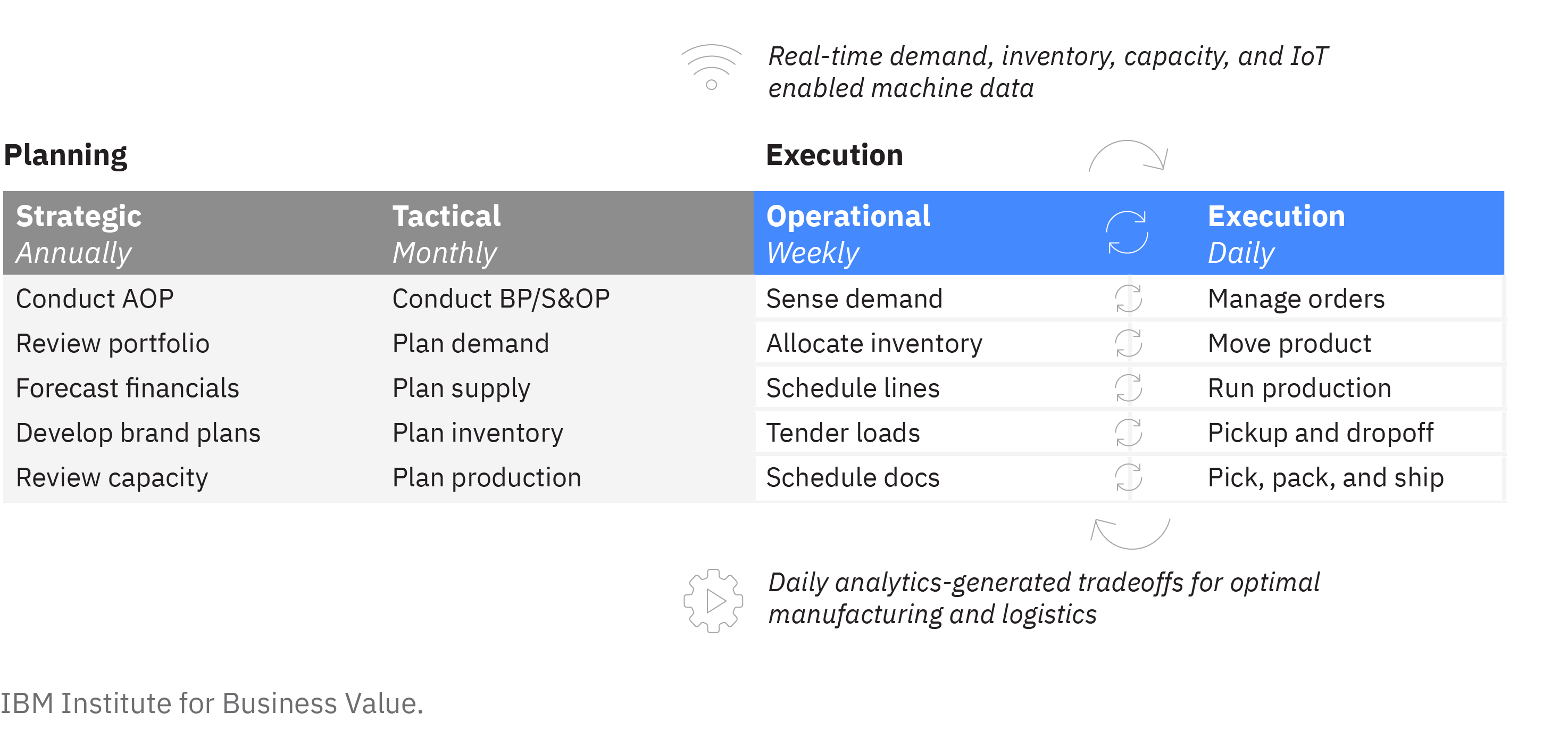The next evolution for consumer supply chains
COVID-19 upended the supply chain. Market volatility shot through the roof, impacting consumer industry segments in different ways. But, as a whole, the impact of COVID-19 exposed vulnerabilities in two primary areas: inventory and agility.
In the case of inventory, 54 percent of Consumer industry executives indicated that they had to reallocate stock in response to the COVID-19 crisis. Food and grocery segments continue to experience shortages of essential goods. Certain products are “in extremely high demand, creating a bullwhip effect on the supply chain and pressuring suppliers to keep production lines flowing.” Whereas the apparel segment suffers from the direct opposite, with a glut of non-essential inventory trapped in stores due to pandemic-driven lockdowns. That cash flow deficiency has been so significant that it has driven businesses like J.Crew and Brooks Brothers to bankruptcy.
49% of Consumer industry executives surveyed say they will develop agile and intelligent workflows as a long-term supply chain strategy in response to COVID-19.
In terms of agility—the ability for a supply chain to adapt and respond to market volatility—beauty and grocery are demonstrating flexible production and logistics capacity to support unexpected surges in demand. While in specialty retail, new fulfillment options like curbside pickup are being accelerated. This acceleration even gained traction with consumer brands like Frito Lay and Kraft Heinz, who recently deployed direct-to-consumer fulfillment channels.
Moving forward, the implications of the pandemic will continue to impact the consumer industry. Supply chain priorities for manufacturers and retailers will continue to shift more toward inventory, agility, and cost. To that end, four key imperatives can help organizations thrive in the next normal.
- Realign and optimize costs by sensing and shaping variability
- Drive flexibility and responsiveness with the rise of agile execution
- Enhance awareness and insights with a renewed focus on supply synchronization
- Play offense by reshaping the end-to-end journey.
The next evolution for consumer supply chains
Operations has always relied on a push model where forecasted demand drives scheduled production and distribution. But given the recent volatility experienced by manufacturers and retailers alike, many are realizing the challenge in producing viable mid- to long-range plans. Consumer behavior continues to shift demand, absenteeism is impacting plant throughput, and workloads are squeezing logistics capacity. Moving forward in such an uncertain market requires more emphasis to be placed on the pull, where actual demand is met by flexible and responsive execution.
The rise of agile execution

Flexibility and responsiveness in manufacturing and logistics execution have never been more critical. Forty-nine percent of Consumer industry executives indicated they will develop agile and intelligent workflows as a long-term supply chain strategy in response to the COVID-19 crisis.
Companies must build agility to rapidly respond to the unanticipated shifts in SKU demand and channel. This not only optimizes inventory in the near-term, but it also charts a path towards higher asset efficiency at the lowest cost by optimizing utilization across plants, trucks, distribution centers, and stores.
Learn how exponential technologies, including AI and automation, can help your organization build a more agile and adaptable supply chain.
Meet the authors
Jim Lee, Partner, Distribution Sector, IBM ConsultingKaushik Malladi, Global Solutions Lead, IBM Blockchain Services
Download report translations
Originally published 30 September 2020


